Disclaimer: This article uses a lot of modular synth technical jargon. If you dig the sounds Brett created in the video but feel overwhelmed by all the cables, knobs and names, check out Synth Basics 101.
In the video above, I built a single patch through eight modules. Based on a series of random voltages, this patch is great for live use as it covers a diverse set of sounds and leaves plenty of room for experimentation.
In this post, we'll walk through the exact flow of this particular patch, describe which modules are being used and explain how they interact with one another.
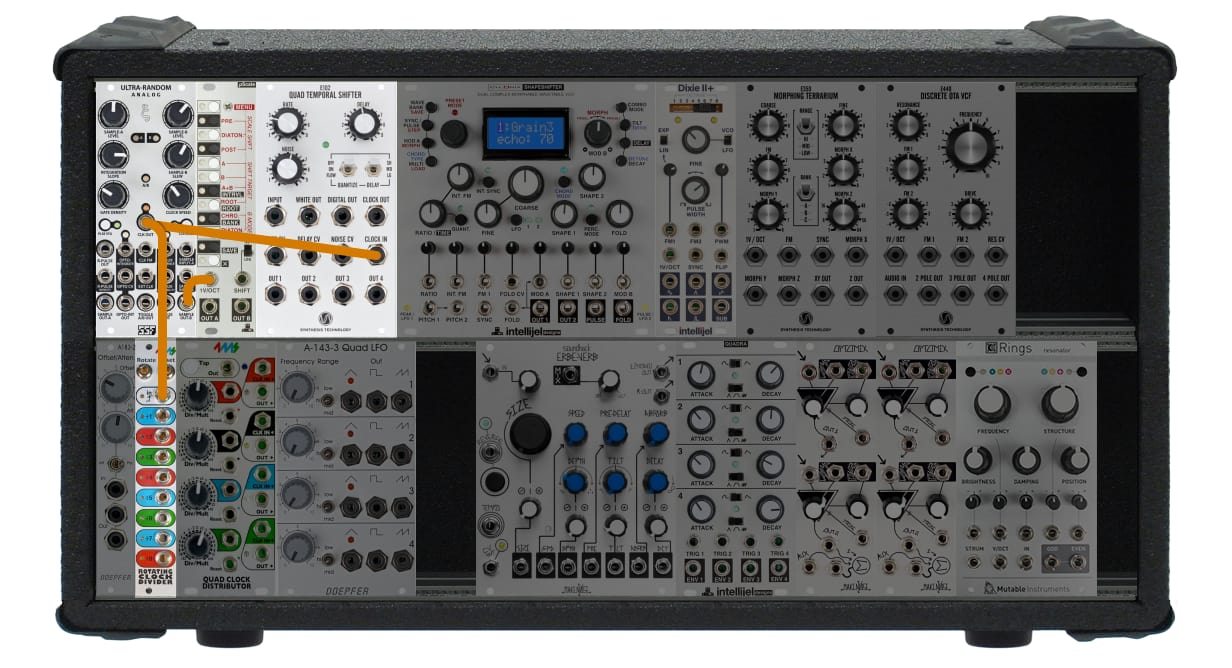
SSF Ultra Random clock output into 4MS Rotating Clock Divider + Synthesis Technology E102. Voltage oputput to Intellijel uScale
To start, the SSF Ultra Random module is the genesis of this entire patch. All of the timing and voltages for the whole system are generated from this module. We start by feeding the clock output into the 4MS Rotating Clock Divider and the Synthesis Technology E102, while the voltage output is then fed into a Intellijel uScale, which quantizes these voltages into a musical scale of your choice.
The combination of these two modules creates what I like to call an ‘auto-melody generator.’ This can be tapered from subtle repeating notes to several crossing octaves, depending on how much random voltage is allowed.
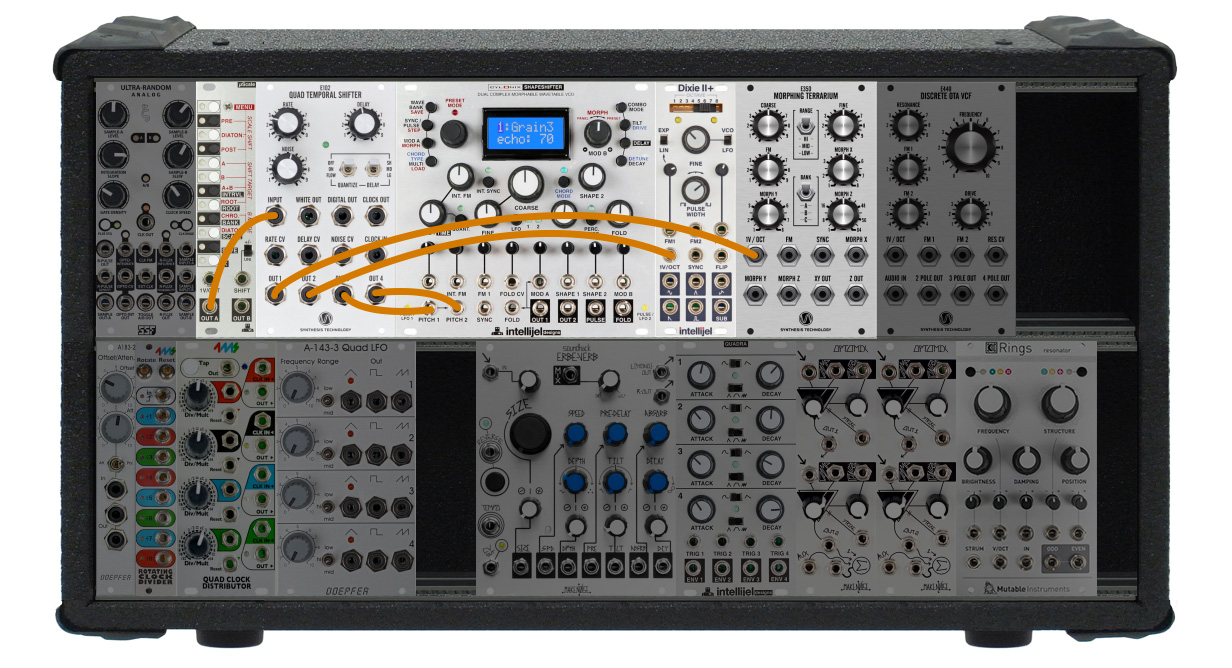
Intellijel uScale to Synthesis Technology E102 to four oscillators: E350 Terrarium, Dixie, and two inputs of Shapeshifter (Voltage 1 + 2)
The Synthesis Technology E102 takes these voltages and distributes them unevenly across four different oscillators resulting in a staccato variation of the same notes played at different times. This creates much needed movement within our system and keeps the four oscillators from playing the same notes simultaneously.
The four oscillators being used here are the two independent oscillators of the Cyclonix / Intellijel Shapeshifter, the Intellijel Dixie II+, and the X & Y outputs of the Synthesis Technology E350 Morphing Terrarium. Additionally, we have a root note drone fed into a Synthesis Technology E440 low pass filter from the Dixie II+. This is the entirety of the audio path for this entire patch.
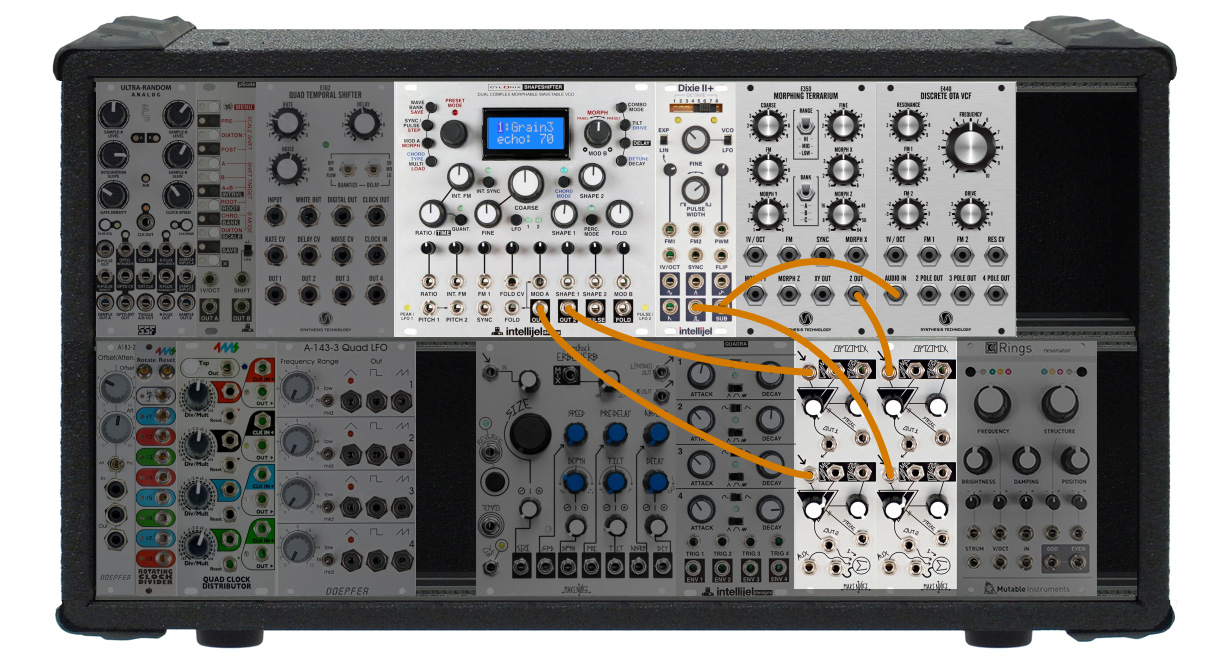
Terrarium 350 + Dixie to one Optomix. Two outputs from Shapeshifter to other Optomix. Also an out from Dixie to E440 low pass.
Once we have our audio path set up, we feed the four oscillators into the four input channels of two Make Noise Optomix modules, which is where the fun begins. The key to this patch is functionality and variation. These simple but useful modules provide the heavy lifting here. With nothing fed into the CV in or Strike inputs, the Optomix acts like a two-channel mixer with some added warmth and low pass filtration from its analog circuitry.

Four gate outputs of clock divider into the Optomixes (2 each)
At this point, all of the sound of the patch has been droning without any volume dynamics. We can change this by taking four gate outputs of the 4MS Rotating Clock Divider into the four strike inputs of the Optotmix set.
Once we’ve turned down the main volume on each channel, we're left with the poly-rhythmic gates ‘plucking’ the vactrol-based circuits of the Optomix, producing a resonant percussive sound. This allows me to go from these constant drones to rhythmic pulses in seconds. By adding in some oscillator frequency modulation between our oscillators, our four tuned voices can become even more drum-like and unusual the more we dial in and detune them.
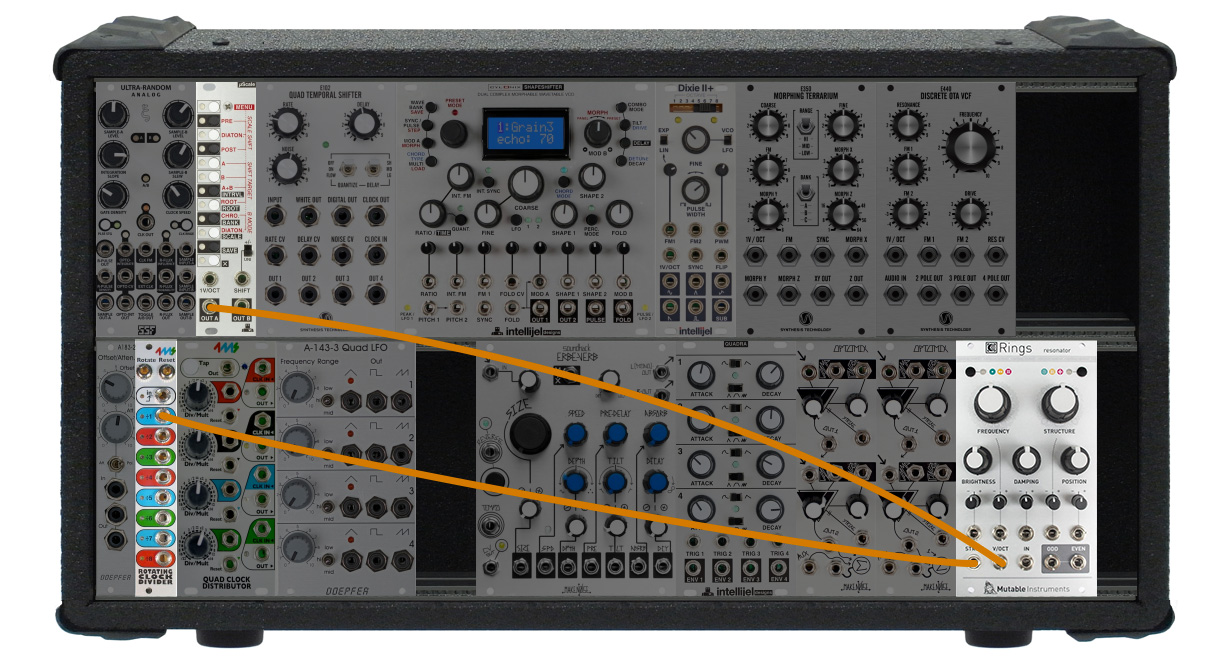
4MS Clock Divider out to the Rings
The last addition to this patch comes from the fantastic Mutable Instruments Rings module, which brings physical modeling synthesis to the modular world.
Here we are using its 'Sympathetic Strings’ mode, which models strings resonating together with various harmonic intervals between them. This results in an almost sitar-like effect which pairs exceptionally well with our four previous voices, now all being struck at different timings. At this point, we’ve moved from constant tones in harmony to a fully polyphonic percussive patch by only turning a couple knobs.
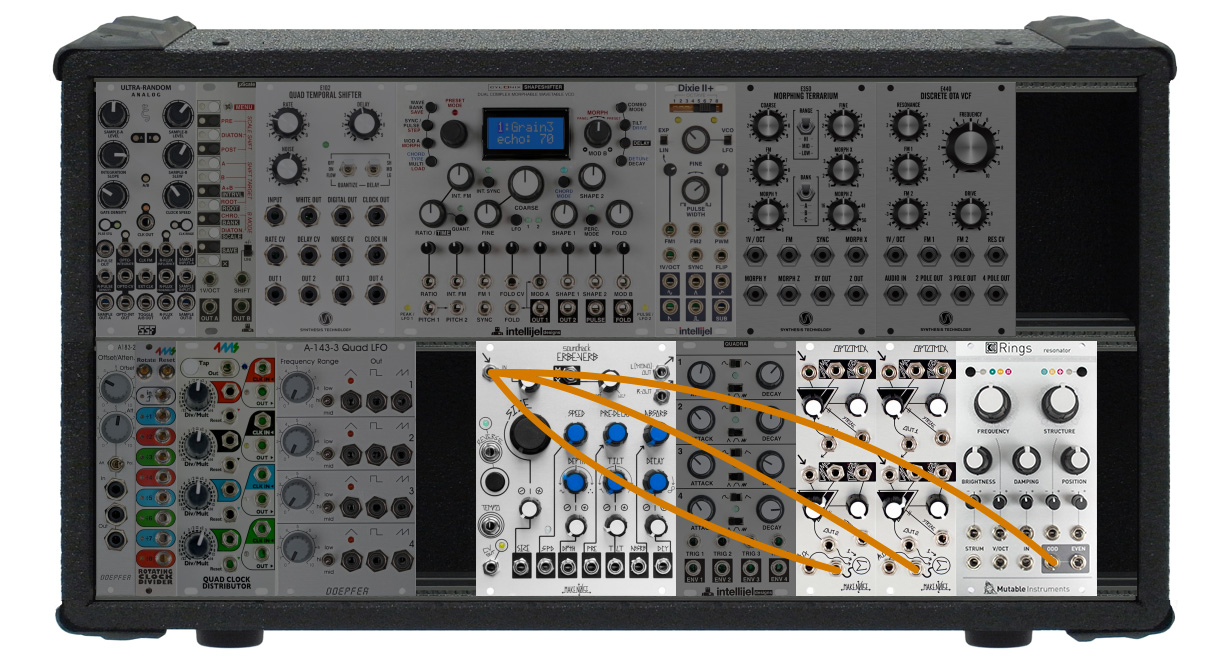
Rings and both Optomixes out to Erbe Verb
Finally, the Rings and the two Optomix modules are then fed into the Make Noise Erbe Verb for added tone sculpting and reverb, completing the patch.
And with that, we've created a generative modular patch without any external sequencing or controllers. The result is a huge variety of melodies, rhythms and tones, all generated from 100% random voltages and deployed with simple controls. It’s just one of the endless possibilities with this combination of modules that can keep you playing for days.
Modular Synth images created using modulargrid.net. Handpicked: Modular Synthesizers